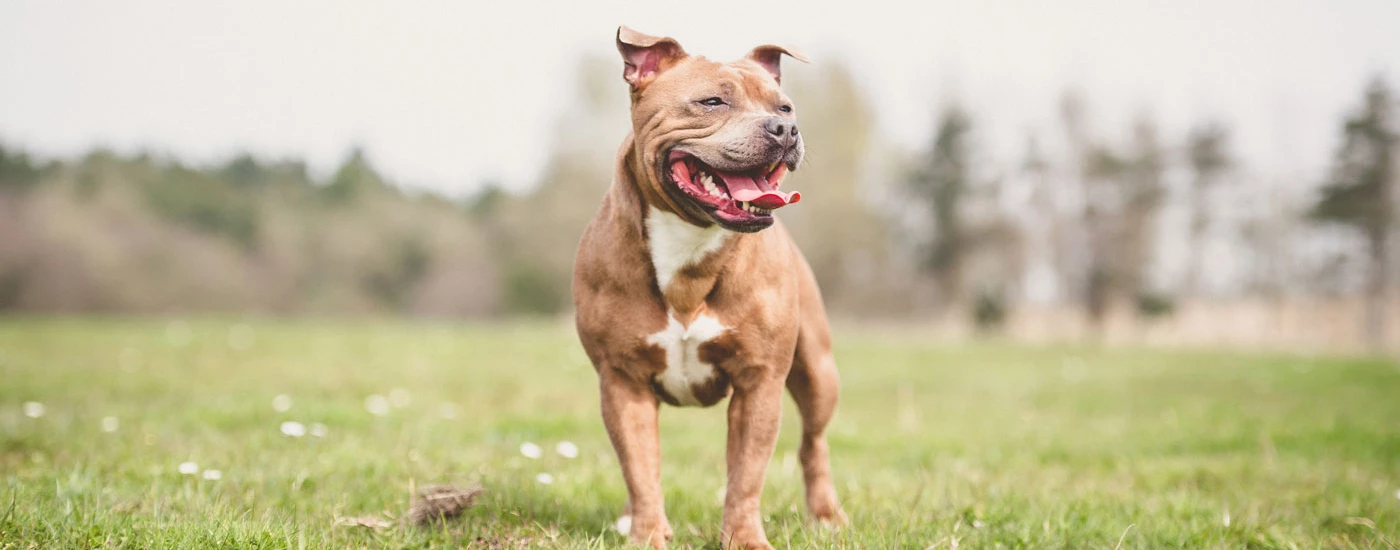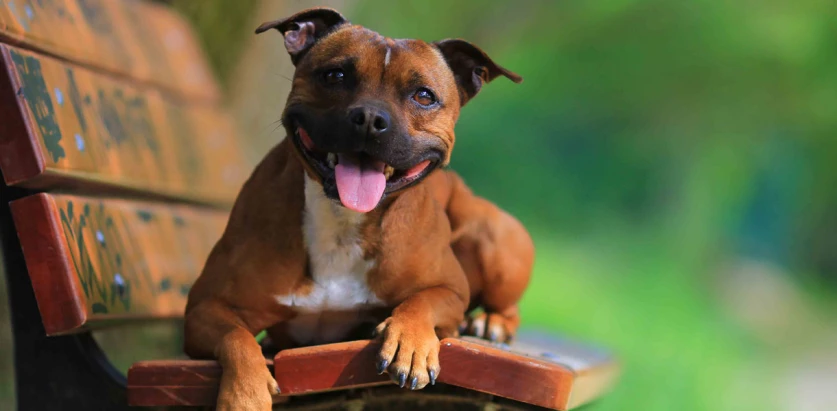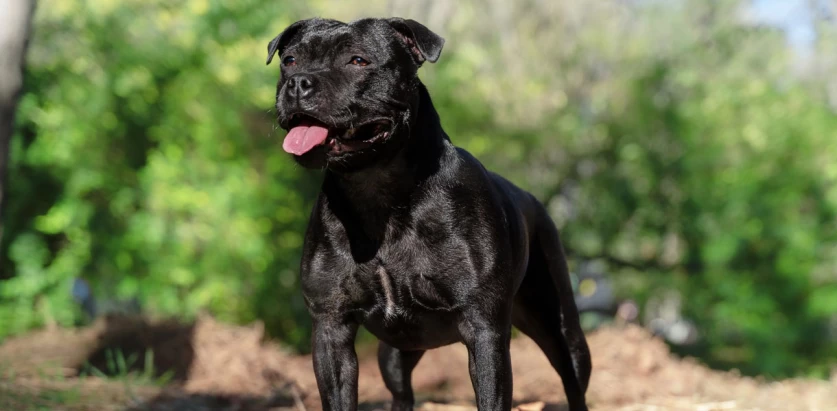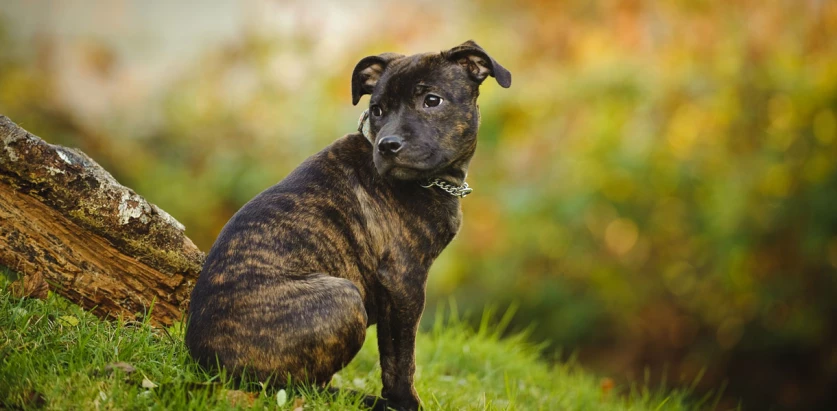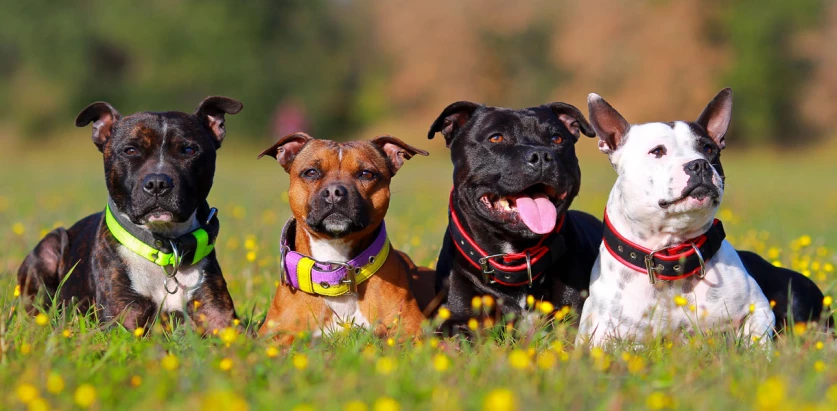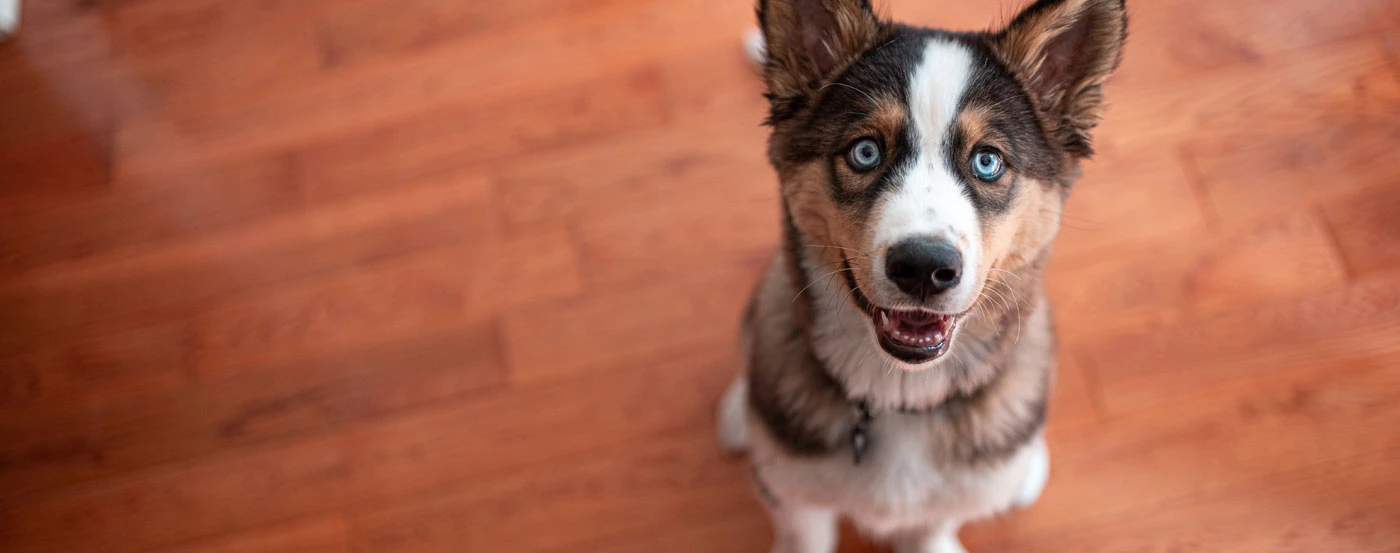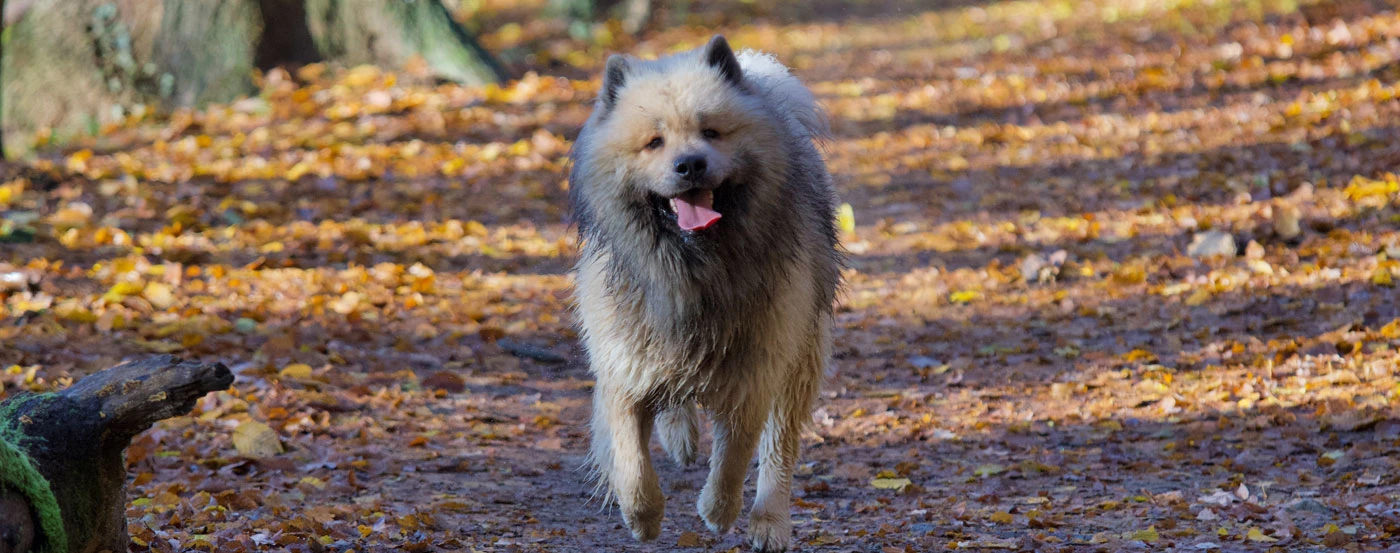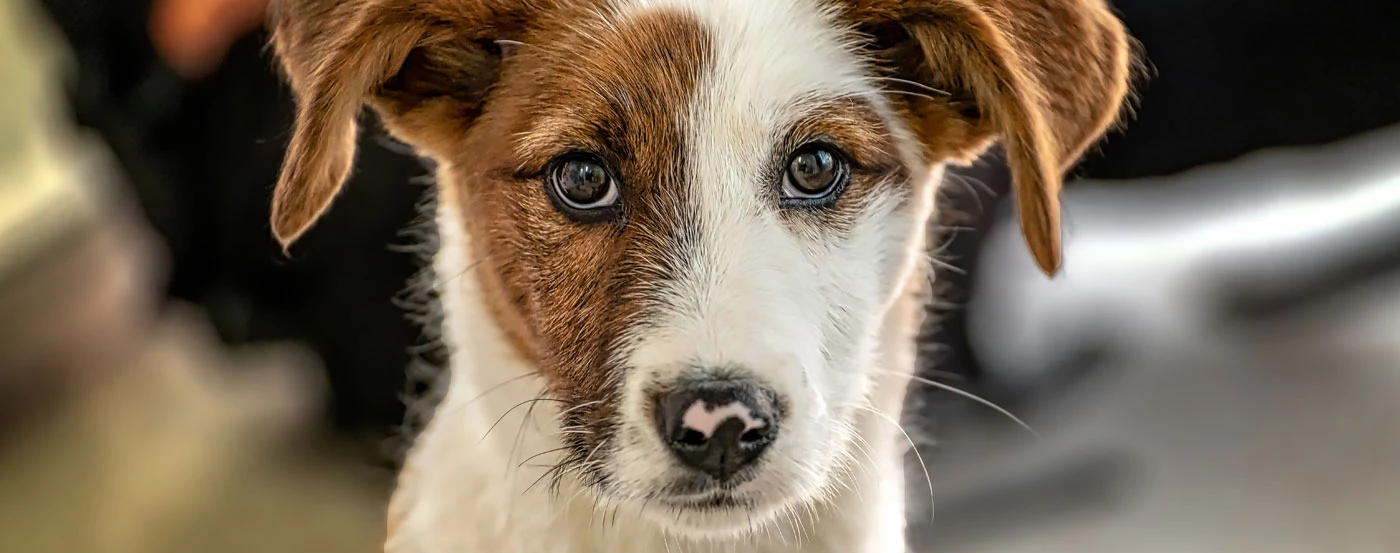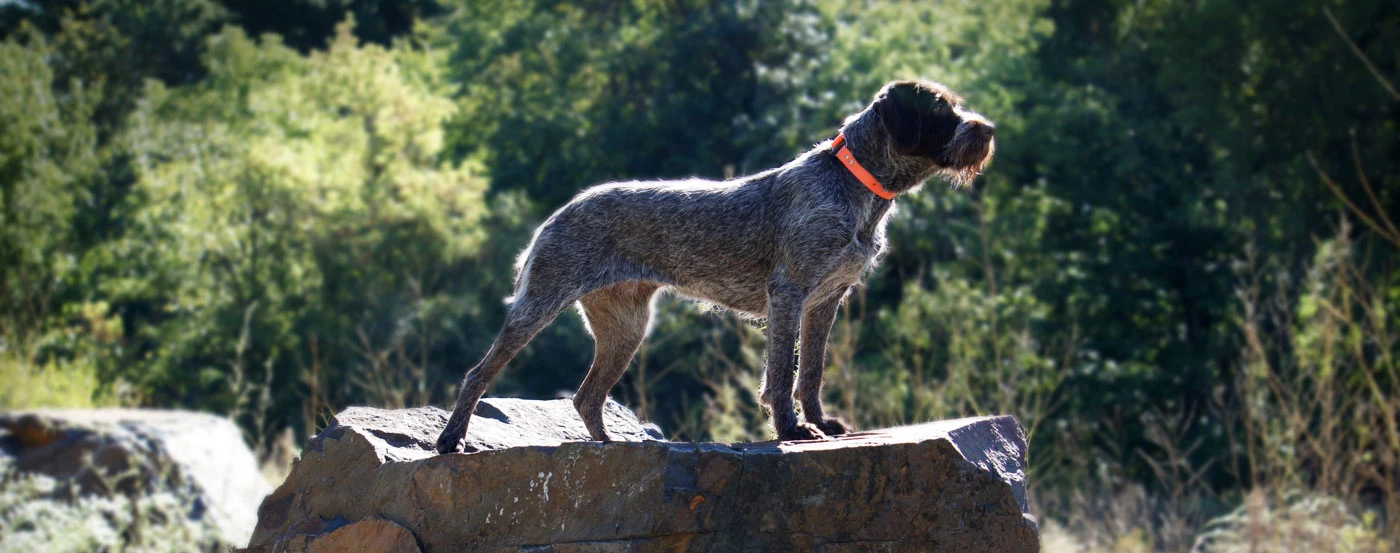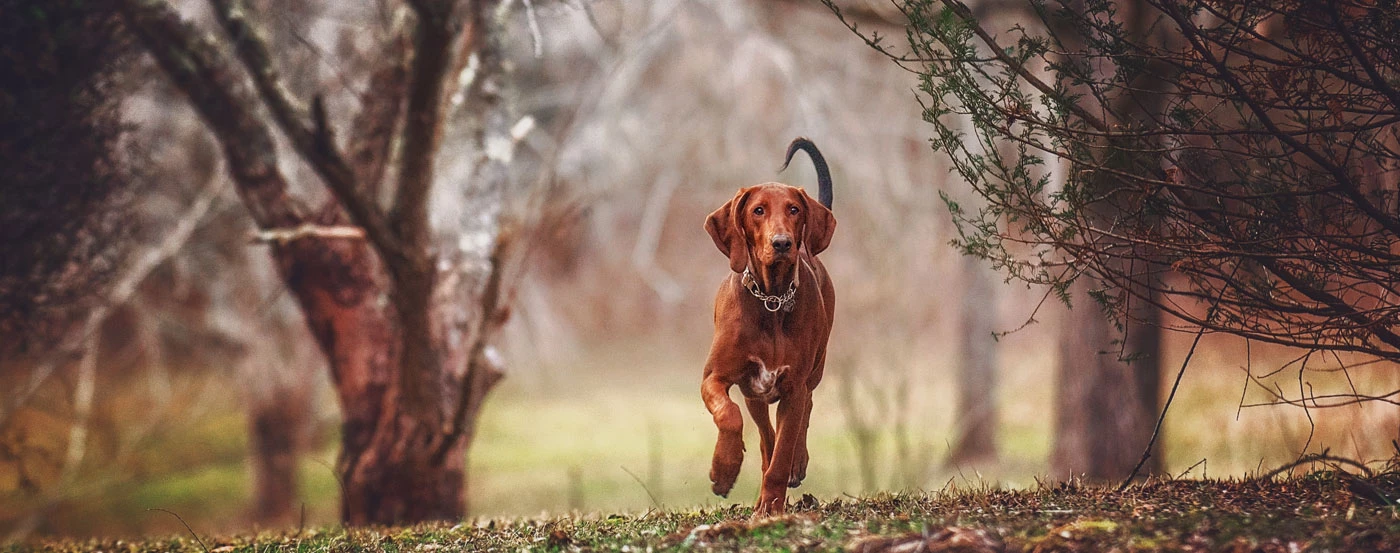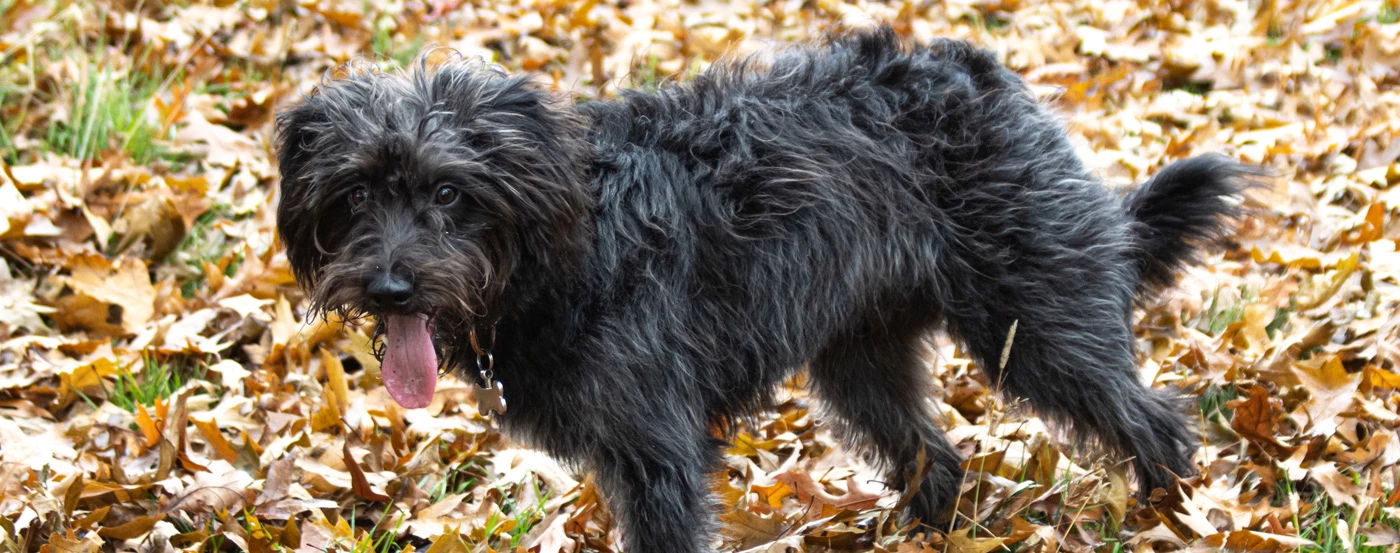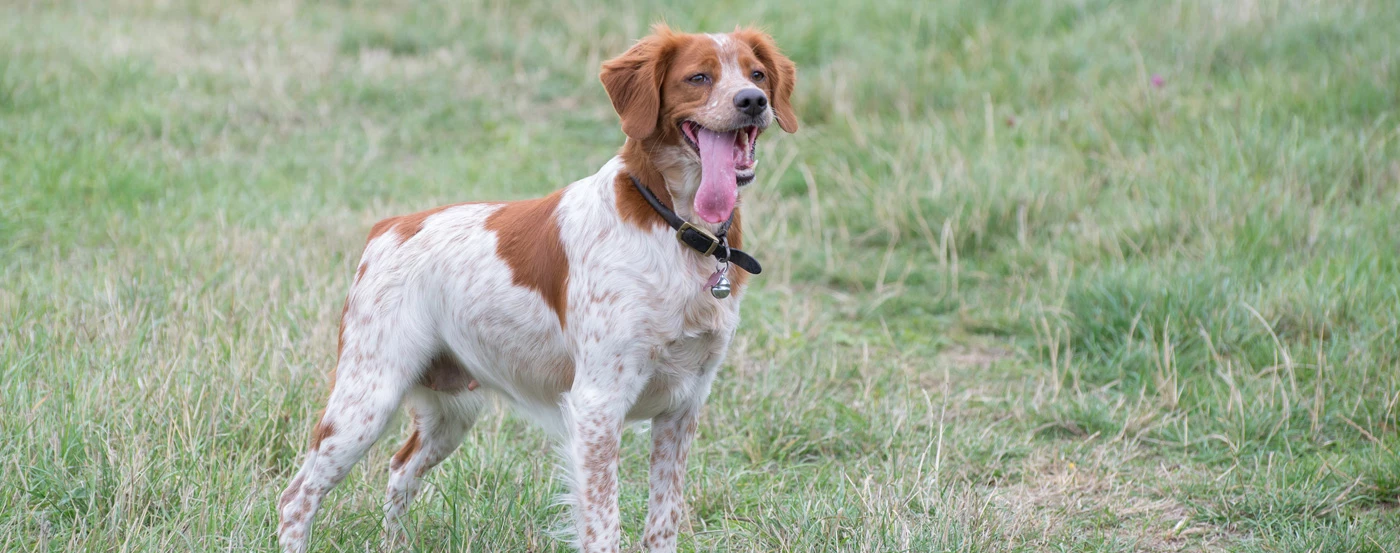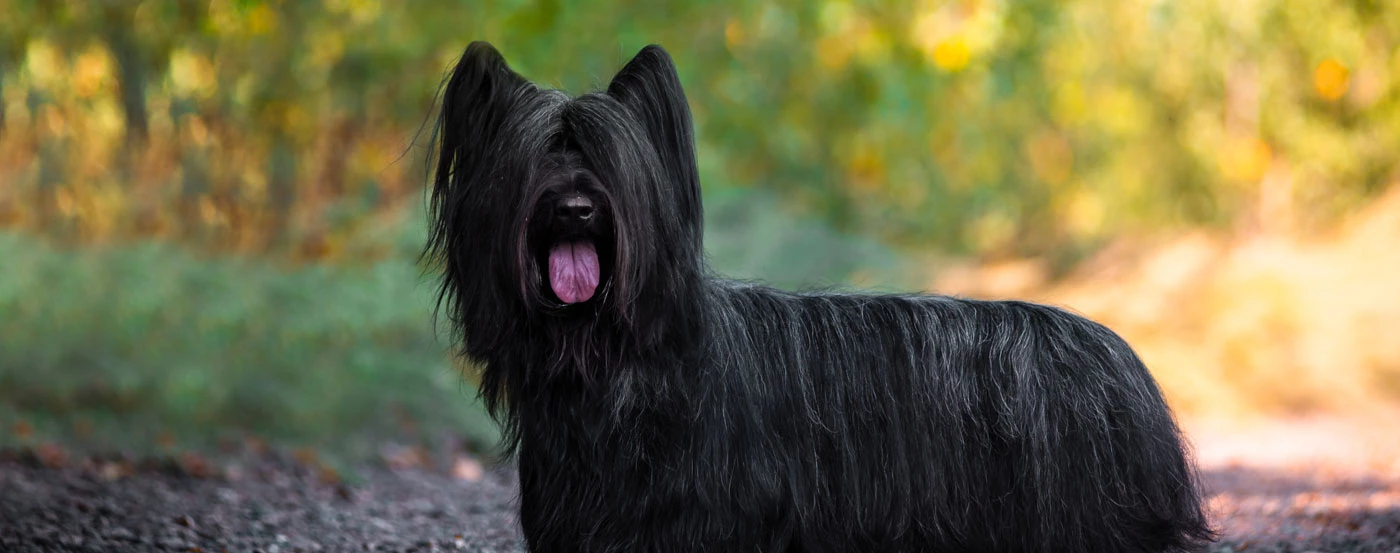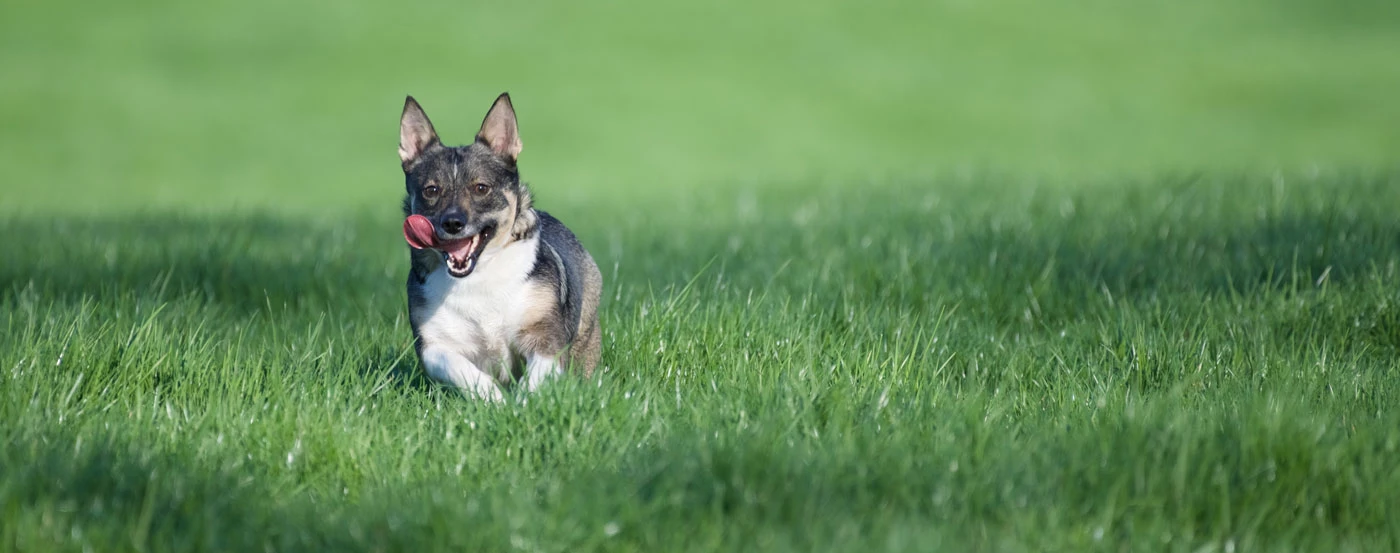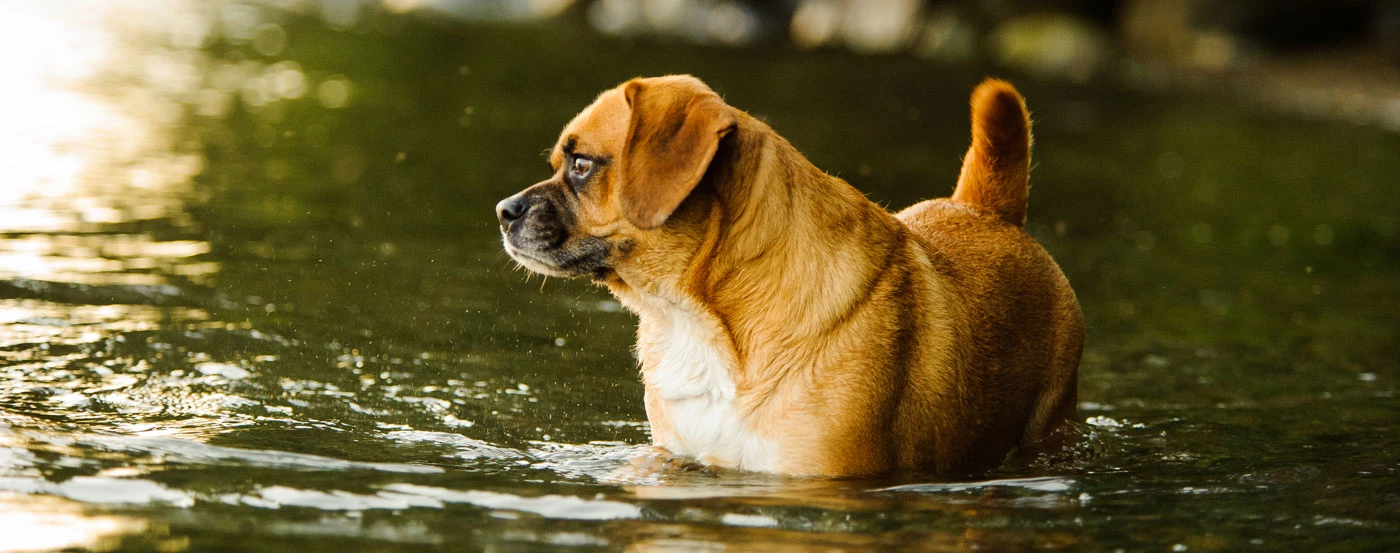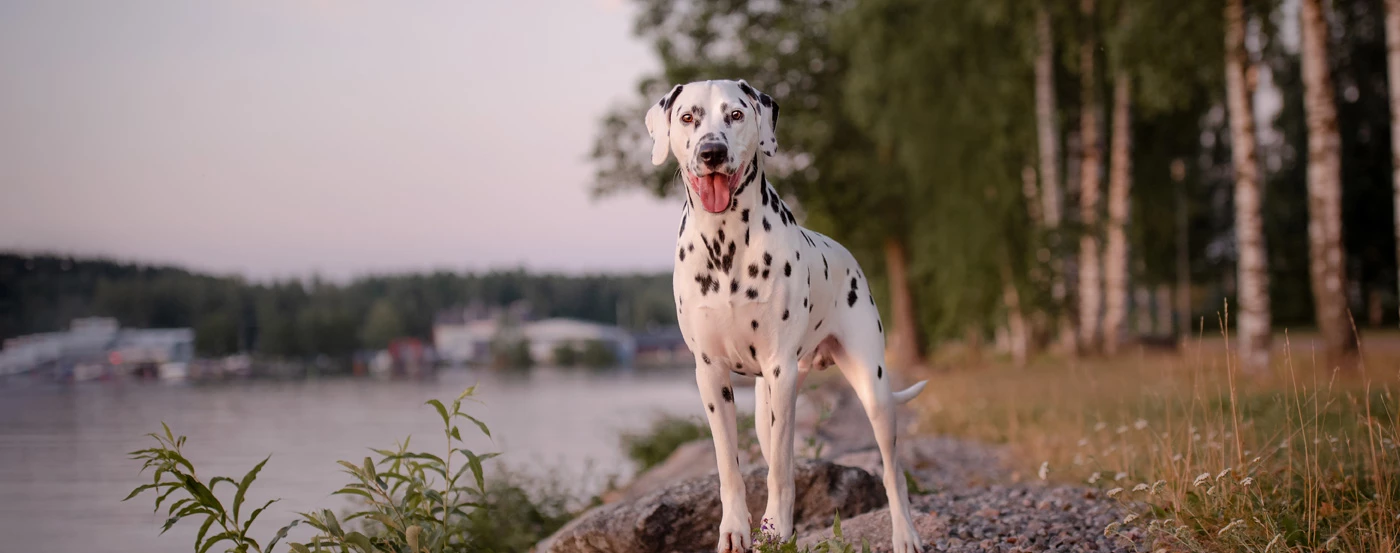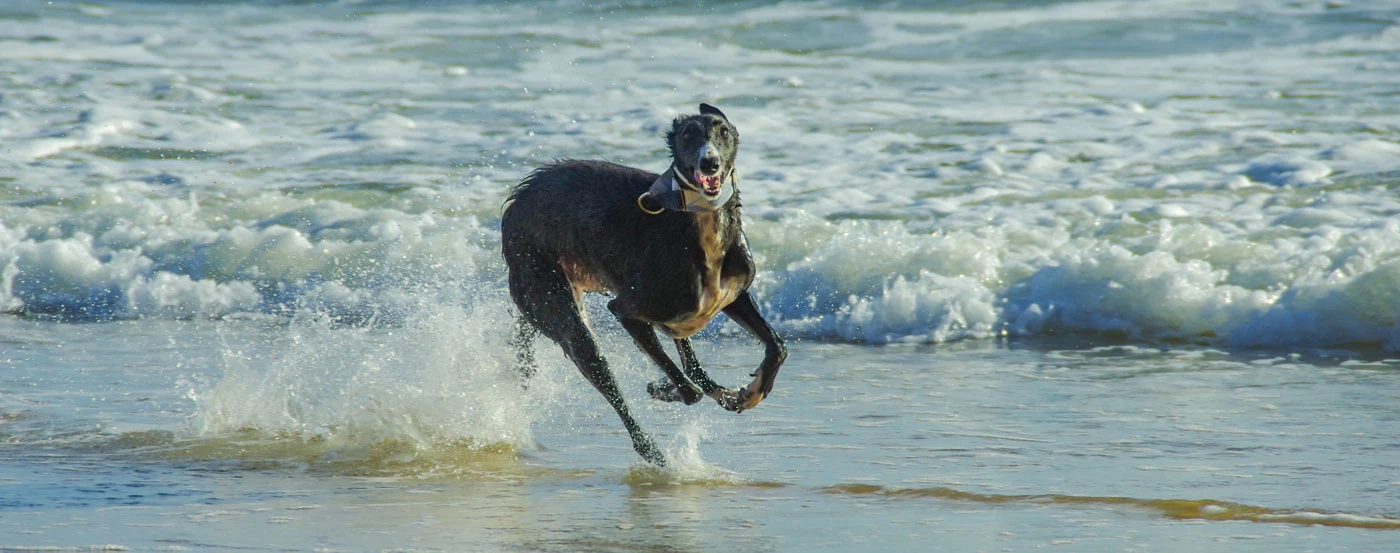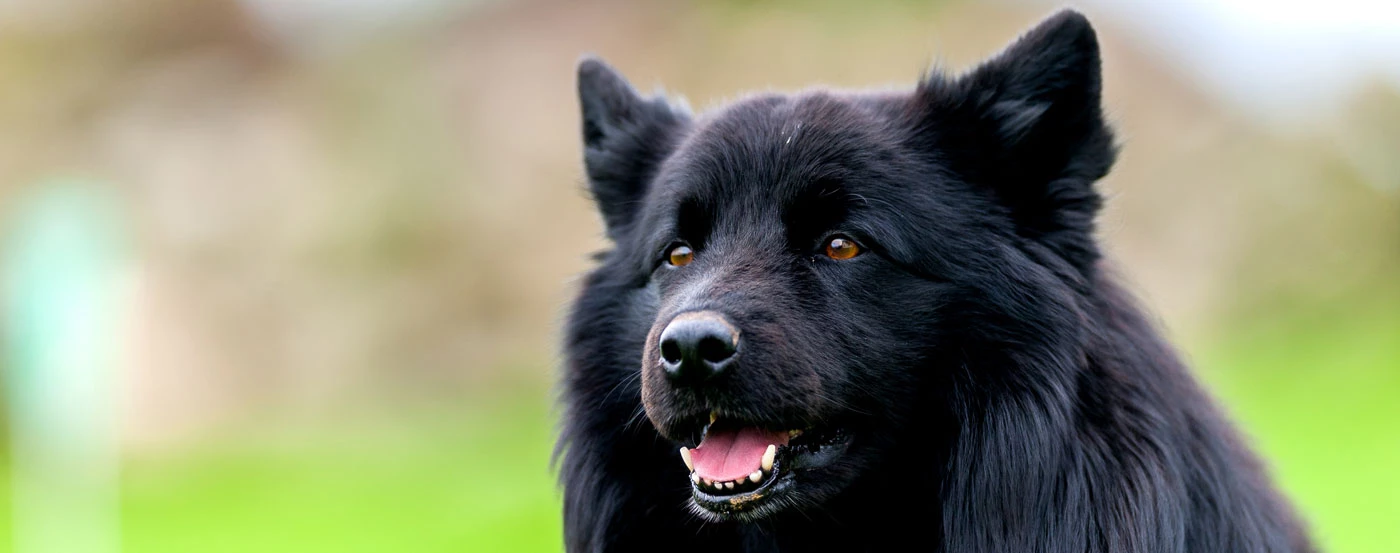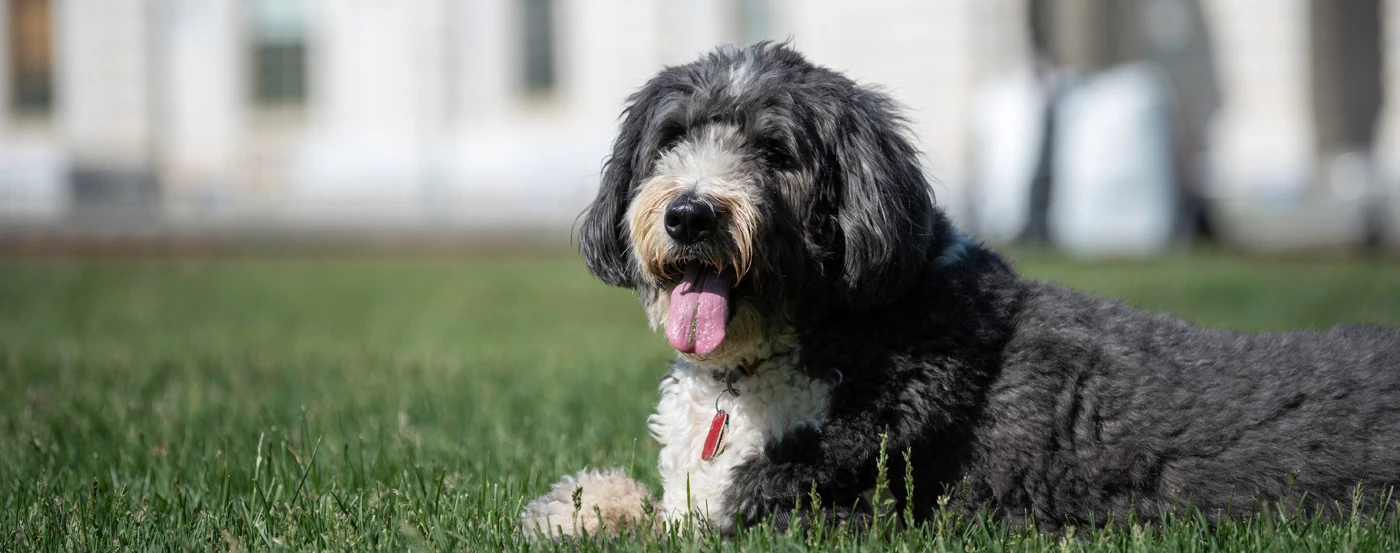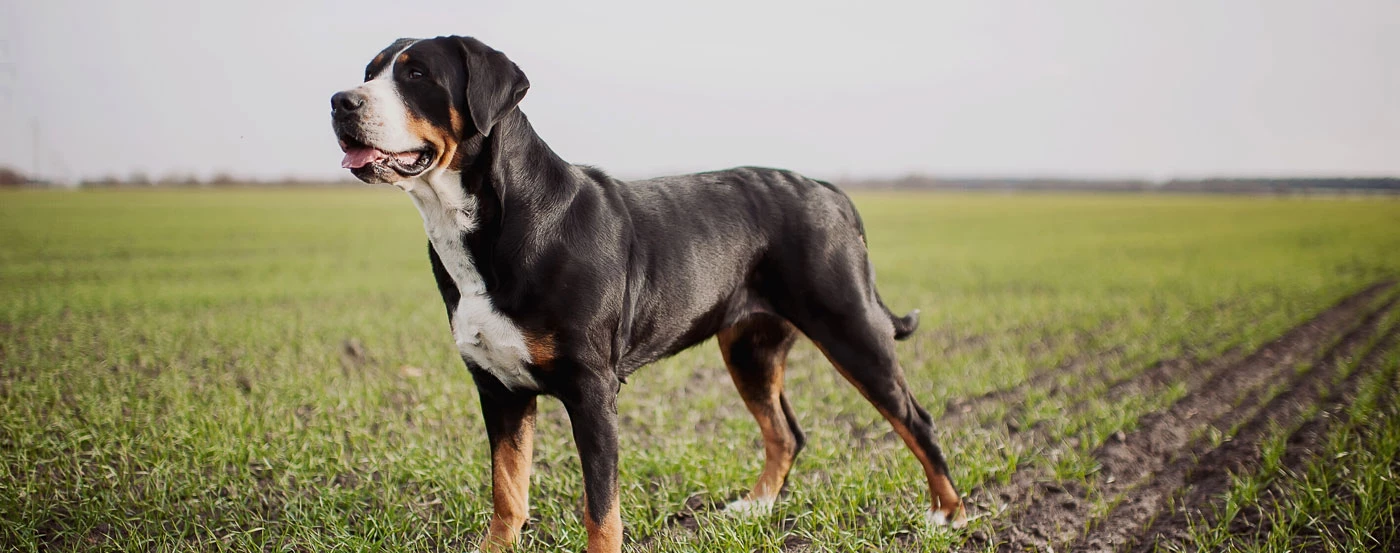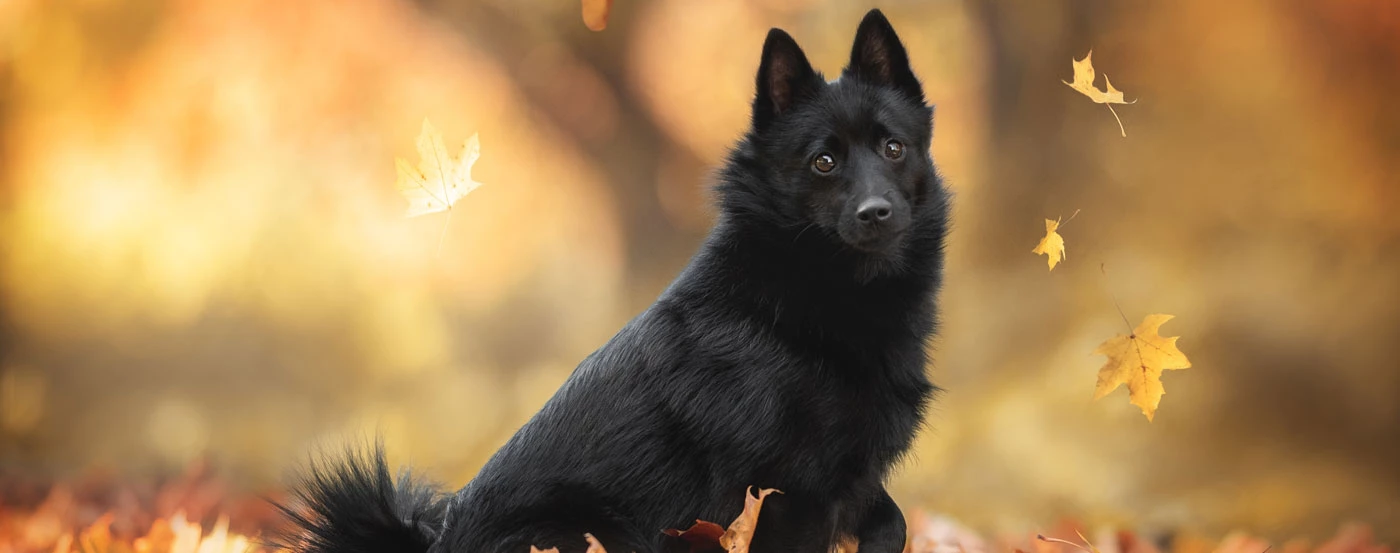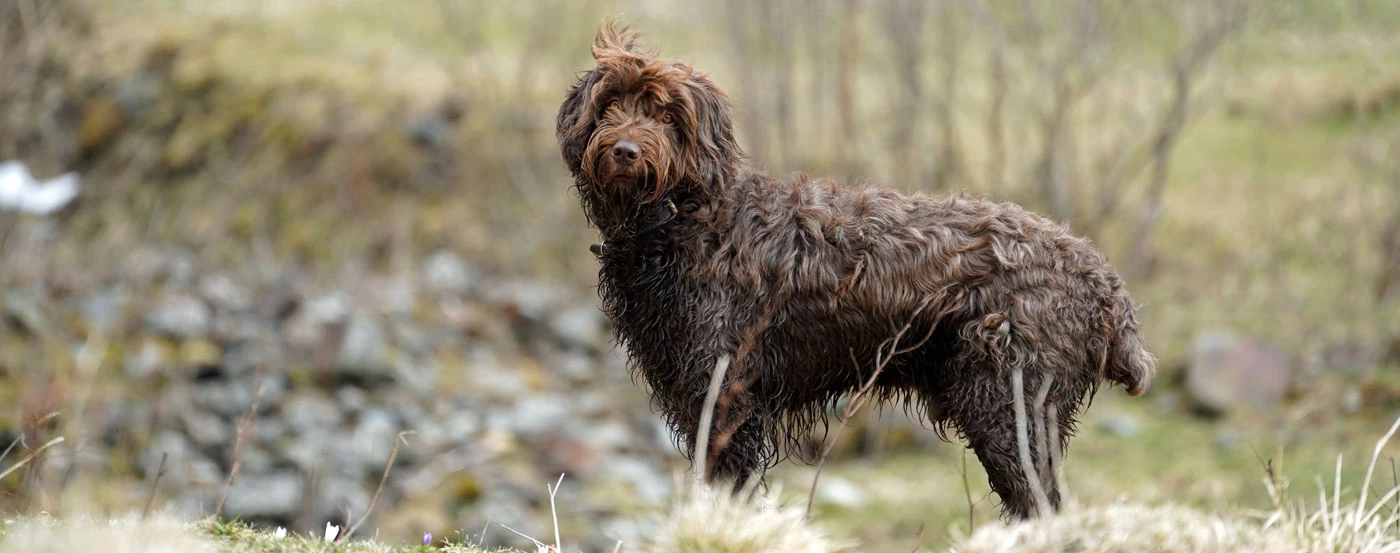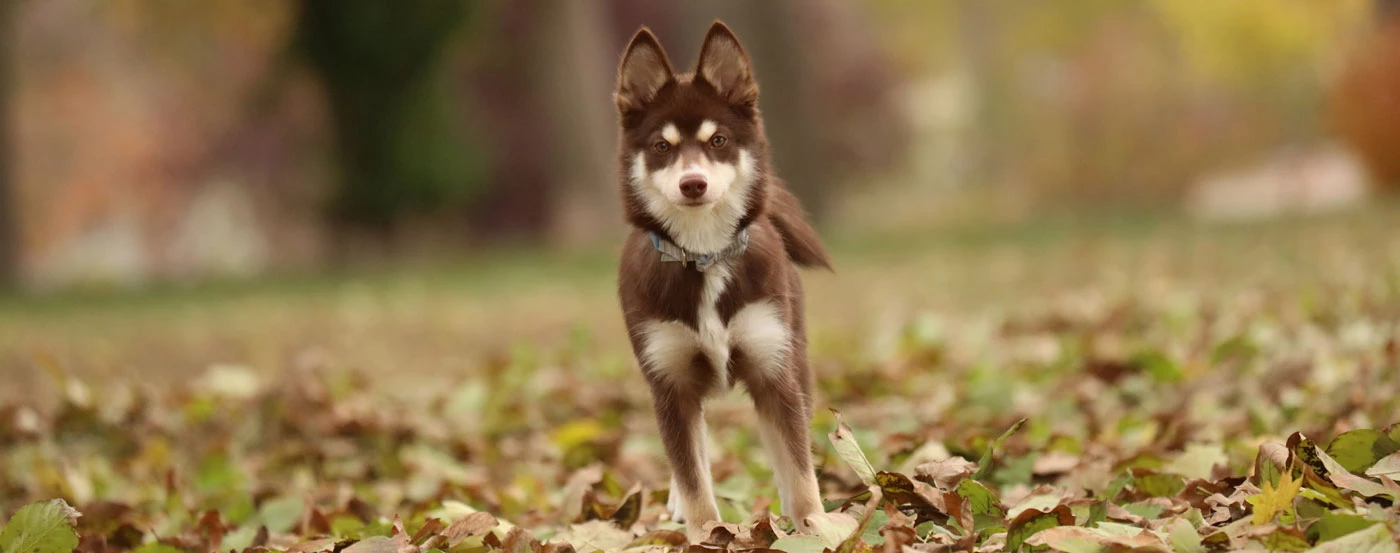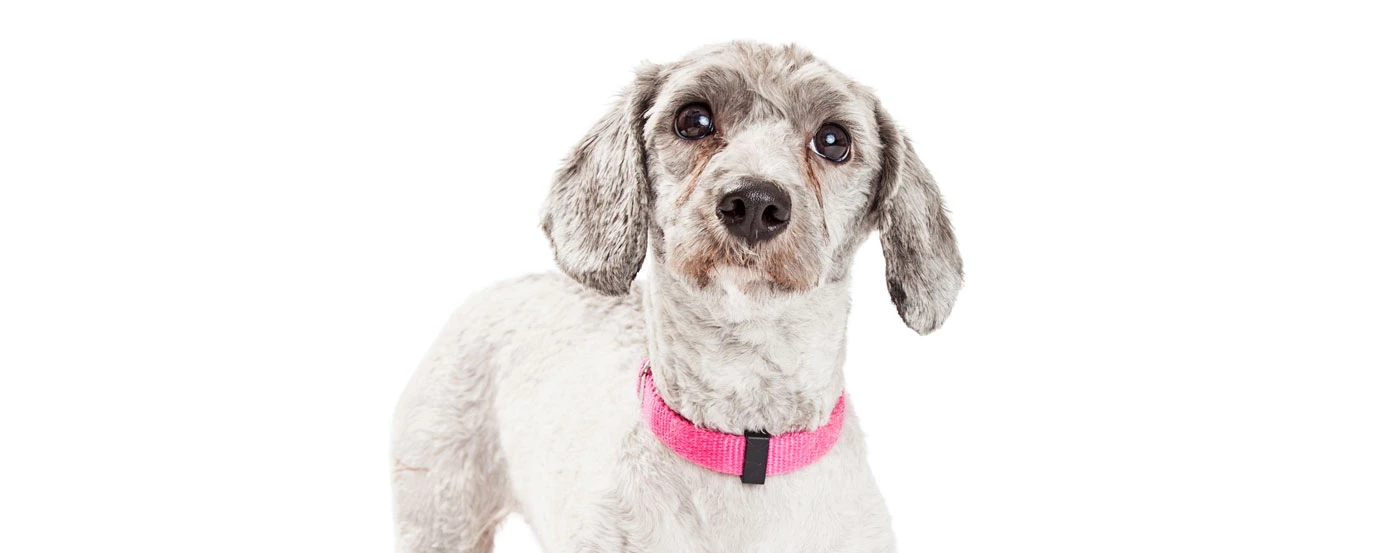About the Staffordshire Bull Terrier
Originating from the Black Country of Staffordshire, England, the Staffordshire Bull Terrier is a fairly new breed in comparison to some that have lasted for centuries.
While they were created to be small fighting dogs, they've been transformed into nurturing companions that are more than eager to shake off the misconceptions that are often made about this breed. In fact, they perform well in dog sports such as obedience training, and some families even use them as nanny dogs.
They're lovingly referred to as a Staffy for short and are found often in the care of rescue centres and shelters. It's important to adopt where you can, as this breed deserves a lot of love. With the right training, care, and attention, the Staffordshire Bull Terrier dog will become a member of the family in no time at all.
Staffordshire Bull Terrier Gallery
What is the history & origin of the Staffordshire Bull Terrier?
The Staffy shares a common ancestor known as the Bulldog, with both the American Staffordshire Terrier, the Bull Terrier, and the American Pit Bull Terrier.
They were created to be played against each other in the fighting ring, which sadly still occurs in many parts of the world. Despite their aggressive primary purpose, they're actually very gentle and friendly towards humans.
The first club for Staffordshire Bull Terriers was created back in 1835 on English soil. The breed was eventually recognised by the American Kennel Club in 1975. The first one registered with the official AKC parent club was named Tinkinswood Imperial - what a name!
The Staffy ranks 85th out of 157 breeds recognised by the American Kennel Club. A man's best friend they are a great choice for those looking for a loving companion.
Who are Staffordshire Bull Terrier dogs best for?
Whilst the Staffordshire Bull Terrier is suitable for most households; it's important for most that you have some previous experience when it comes to dog ownership. This is due to the fact that this breed needs a little more training to ensure that it's well-behaved and that its naturally protective nature isn't misplaced as it has been previously.
New dog owners should choose a different breed as this one requires a little more experience and deserves the experience of someone who has owned Staffies before or a similar type of dog.
How much grooming does a Staffordshire Bull Terrier need?
Like the American Staffordshire terrier, this breed has a short and smooth coat that is close to the skin and therefore requires care in its grooming.
The colours of the coat will typically come in black, white, blue, red, fawn, and brindle. Shedding is fairly minimal for this type of dog, and therefore, a weekly brush is all that's needed to keep them nice and presentable.
Bathe them as and when it's needed. Due to the short hair and little odour it produces, you don't need to give them regular baths!
For other grooming habits to practice, we'd recommend brushing their teeth two to three times a week and trimming their nails every month. Check the ears for any dirt and debris, and be sure to do all this from a young age, so they get used to it.
Do Staffordshire Bull Terrier bark much?
You'll find that, like the American Pit Bull terriers, the Staffies don't bark, but they can often be vocal in the sounds they produce. From their snorts, grunts and snoring, they will certainly make a bit of noise from time to time, but nothing that causes too much annoyance.
Unlike some other dogs, the barking is quite minimal with this breed.
Do Staffordshire Bull Terrier bite?
This breed, despite its checkered history, is a safe breed to be around families and children. It's advised that no dog should ever be left alone with a young child or toddler. Some dogs might not know their own strength and how to play with children, and vice versa when it comes to children hitting or pulling on a dog's tail, for example.
Always provide a learning environment for both the dog and your children when it comes to common things like touching when a dog's eating or playing with its toy.
If you notice any nipping or biting tendencies, try to iron these out from an early age.
What is the temperament & personality of a Staffordshire Bull Terrier?
From a young age, a Staffordshire bull terrier puppy is energetic and keen to get involved in everything that your household does. The temperament of this breed is stubborn but curious, courageous, and sometimes tough. They're more protective of their family than of any possessions.
They're attentive to people outside of the home, too, so they'll definitely want to meet new guests.
Early socialisation is key for them to behave appropriately around humans and other dogs. It's worthwhile having guests over regularly and going to busy parks or areas that allow dogs. They have a sociable personality that everyone will love.
What is the weight & size of a Staffordshire Bull Terrier?
Staffords are short in size and stand only around 35 to 40 cm. Males are slightly taller and heavier at around 12 to 17 kg. Females are only 10 to 15kgs depending on how well you feed them!
In comparison to other dogs, the Staffie is considered to be a small to medium-sized dog.
How much training does a Staffordshire Bull Terrier need?
Training is critical with any dog breed; otherwise, their pack mentality will have them taking over the household in no time.
This breed is an intelligent one, so they'll learn fairly quickly. However, they can be quite stubborn, so it's important to have patience and be firm when needed. Look for the behaviours that deserve a reward and better the ones that aren't.
What are some of the most common health issues for a Staffordshire Bull Terrier?
Staffies are fairly healthy dogs, but they can be subject to some health conditions due to their breeding.
Hip Dysplasia - This is a heritable condition where the thighbone does fit properly into the hip joint. This can cause arthritis for dogs in later years.
Elbow Dysplasia - Similar to hip dysplasia, it's where the three bones making up the dog's elbow grow at different rates.
Patellar Luxation - Occurs when the femur, patella and tibia don't line up properly and slip out of place. This can lead to arthritis and degenerative joint disease.
Skin Allergies - An itchy, scratchy condition that can cause hair loss and sores on the skin.
Cataracts - Hereditary cataracts are a cloudiness of the lens that can occur at an early age, leading to blindness at the age of three. Surgery can sometimes help partially restore the vision that's been lost.
What is the lifespan of a Staffordshire Bull Terrier?
You'll get between 12 and 14 happy years with your Staffie, which is a great average age for most dog breeds.
As long as you're giving them plenty of exercise and keeping an eye out for health conditions, there's no reason why they shouldn't live up to this lifespan or even a little longer!
How much should you feed a Staffordshire Bull Terrier?
The recommended feeding amount depends on the size of your dog, and this can also be determined by your vet. They'll want to eat more if they're being exercised quite a lot more, but it's good to try and keep the food to the same amount every time to keep them from gaining excess weight.
It is more difficult for overweight dogs to lose weight than it is for dogs that need to gain weight. A good guide is being able to feel their ribs but not see them.
What is the price of a Staffordshire Bull Terrier in Australia?
Staffordshire Bull Terriers will usually set you back between $1,500 all the way up to $5,000 in some cases. This will vary depending on whether you get a rescue or you opt to purchase from a breeder.
Remember to make sure the breeder you go to is registered with a breed club.
Pros
- Low grooming requirements
- Playful and personable
- Incredibly athletic and well-built
Cons
- High exercise requirements
- Tendency of chewing and digging
- Do not adapt well to hot climates
